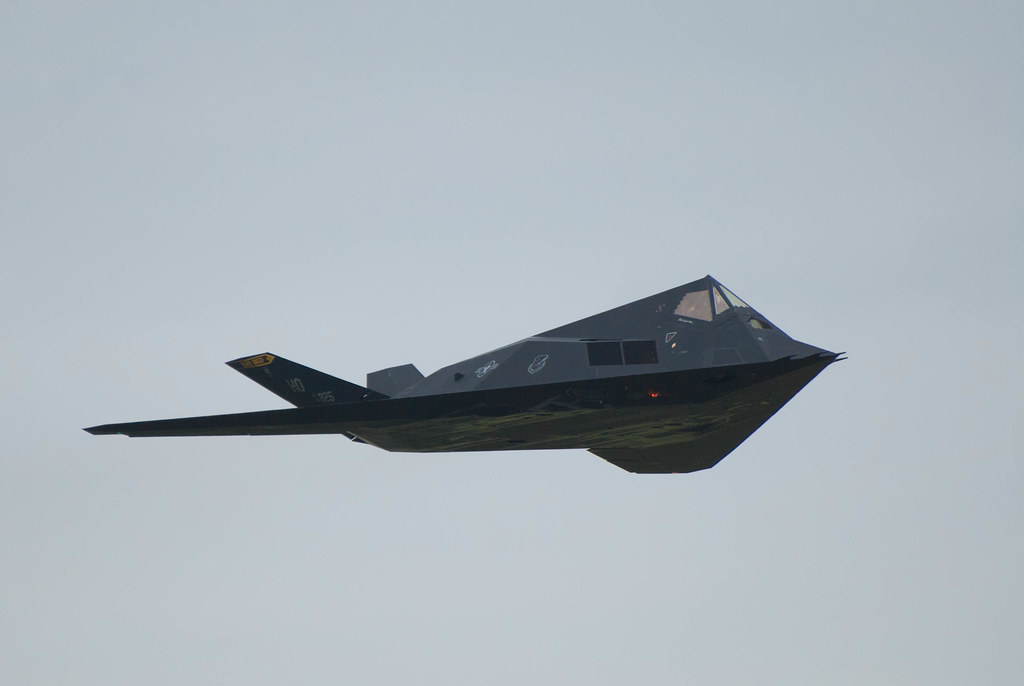
In the history of military aviation, the Lockheed F-117 Nighthawk stands out as an aircraft that has significantly captured the imagination.

As the first operational stealth aircraft designed to elude radar detection, the Nighthawk represented a quantum leap in combat aviation and national security strategy.

Initially delivered to the U.S. Air Force in absolute secrecy in 1982, its existence remained a closely guarded secret until it was officially acknowledged in 1988.

The F-117’s distinct design, characterized by its triangular outline and sharply swept-back wings at a 67° angle, was a direct response to a 1974 request from the Defense Advanced Research Projects Agency (DARPA).

Lockheed’s Skunk Works, famed for its clandestine work on the U-2 and SR-71 spy planes, developed an aircraft with a surface of flat planes, coated in radar-absorbing material, to deflect radar waves from their transmitters, thereby drastically reducing its radar cross-section.

The twin-engine jet fighter-bomber, with no afterburners to limit infrared emissions, used inertial guidance, infrared sensors, digital maps, and radio commands from satellites or other aircraft for navigation, thus avoiding the emission of radar signals.

With a payload of laser-guided bombs or radar-seeking or infrared-seeking missiles housed internally, the Nighthawk redefined the USAF’s operational capabilities.

The F-117’s baptism of fire occurred during the invasion of Panama in 1989, showcasing its prowess by striking with precision and impunity.

It continued to prove its value in the Persian Gulf War of 1990-91 and the Iraq War of 2003-11. However, in 1999, during the Kosovo conflict, the Nighthawk suffered its only combat loss.

Despite the F-117’s trailblazing legacy, the fleet was retired in stages between 2006 and 2008.

Production had ended in 1990 with 59 aircraft built, and the last F-117 left active service following decades of distinguished service.

Yet, the story of the Nighthawk did not conclude with its retirement. Nearly 14 years later, the U.S. Air Force confirmed plans to continue operations with at least some of the F-117 fleet through 2034.

These aircraft, now relegated to non-combat roles, have been actively used for research and development, testing and evaluation, and training purposes.

They serve as ‘red air’ aggressors and surrogate stealthy cruise missiles during large-scale exercises, and their distinctive low-observable characteristics remain valuable in testing new stealth technologies and training pilots against advanced threats.

The Air Force Test Center (AFTC) has actively sought maintenance and logistics support services to maintain the limited flying operations of the F-117s at the Tonopah Test Range (TTR), with a contract potentially initiating in January 2024.
Relevant articles:
– F-117 | Stealth Fighter, Nighthawk, USAF, Britannica
– F-117 | Stealth Fighter, Nighthawk, USAF, Britannica
– F-117 Nighthawk, Lockheed Martin
– ‘Retired’ F-117 Nighthawks Will Fly For Another Decade, twz.com

